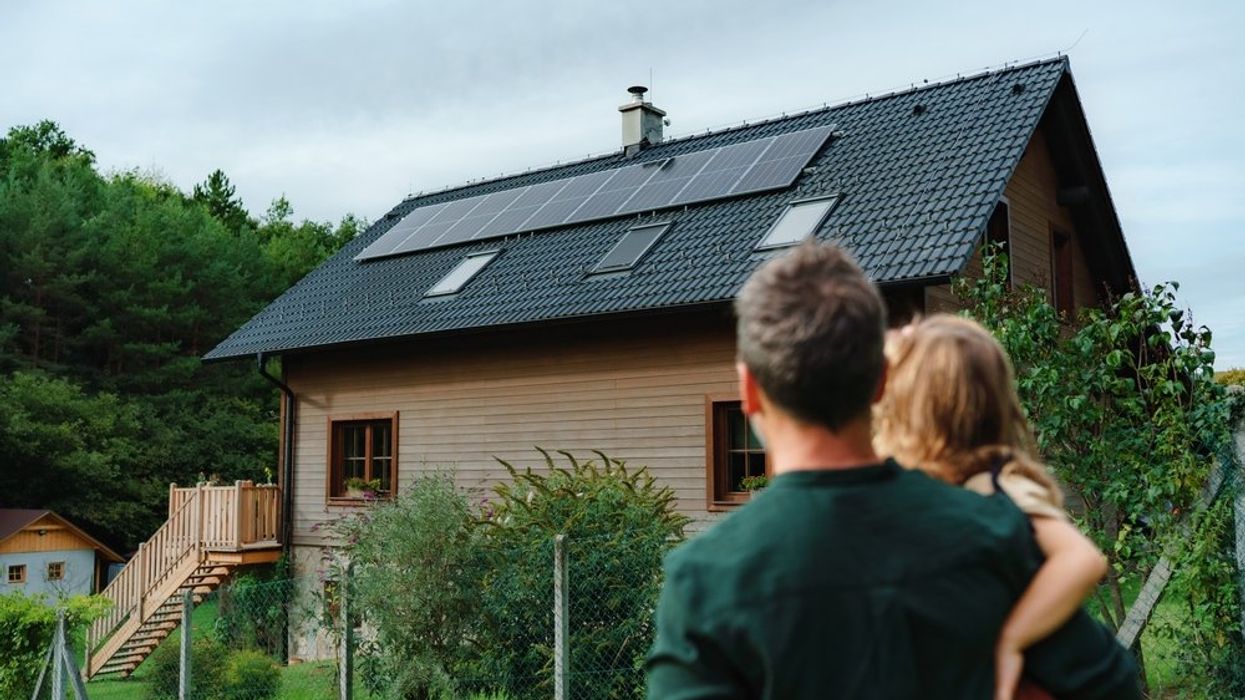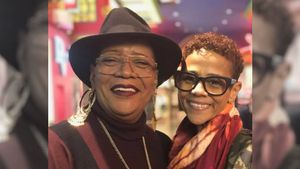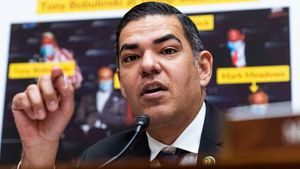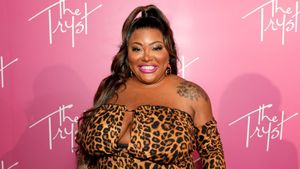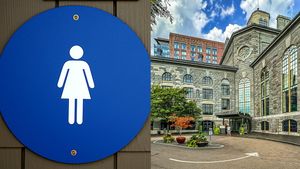Lansdale, Pennsylvania (CNN) — Rachael Gambino and Garrett Mazzeo planned their financial life by the book: They went to college, paid down debt, saved aggressively, got married, bought a house, started a family. The dream.
But sitting at the kitchen table of their suburban Pennsylvania home — an asset they feel both lucky to own and also somewhat trapped by — they say they wouldn’t do it all over again quite the same way.
Fortheir nine-month-old son, Miles, Rachael and Garrett agree: They’re not going to push him to pursue the same path.
“I think a lot of Millennials were forced into saying, ‘you need a four-year degree in order to be successful,’” says Rachael, who is 33. “At 18, you’re signing up to be $100,000 in debt before you even really know how to make the best decisions for yourself. I think we need to change that narrative.”
Rachael and Garrett know how lucky they are, both having steady work and parents whom they were able to live with temporarily while they saved for a down payment. Critically, they also have a tenant: Rachael’s younger sister, Kristen Gambino, 26, moved in shortly after they bought the house in 2022, helping them pay the mortgage while saving herself from an increasingly unaffordable rental market.
But the couple still feels like they’re on a knife’s edge. Their day-to-day lives are dictated by a spreadsheet where Garrett, 35, meticulously manages every dollar coming in and out.
“This is the American Dream,” Rachael says. “But at what cost? What are we paying for the American Dream now?”
From one crisis to the next
There’s a perception so prevalent in post-Covid America it’s practically become a cliché: The economy is good but the vibes are bad.
Having skirted an actual recession last year, we entered a vibecession in which virtually all economic data suggests the United States is thriving, but people aren’t quite feeling the effects.
In a CNN poll conducted last month, a stunning 71% of Americans said economic conditions in the country were “poor,” with 38% calling them “very poor.” And that’s somehow better than in the summer of 2022, when 82% said the economy was poor.
The culprits behind the bad vibes are obvious: high prices, an impenetrable housing market, persistent inequality, rising debt.
Decades-high inflation is finally coming back down to Earth, but in its wake is the scourge of high prices — a daily reminder of how much more we’re shelling out both for basic necessities and the indulgences we denied ourselves during the pandemic, like concert tickets and vacations.
But less talked about are the financial resentments that have calcified in the psyche of the nation’s most populous generation over the last quarter-century. For Millennials, hit with two world-altering economic downturns before their 40th birthdays, bad vibes come standard.
Even as Millennials have made up significant ground in terms of wealth over the past four years, according to Brendan Duke, senior director for economic policy at the Center for American Progress, that shift only came after more than a decade of stagnant wages and more or less flat wealth accumulation.
They are the most educated generation in US history, but it didn’t come cheap.
Between 1987 and 2017, the cost of attending a public four-year college rose more than 200%. While data on student debt varies, the average balance for a borrower between the ages of 25 and 34 stands at $32,000, according to Department of Education data.
All of those strains — a long hangover from Great Recession, all the way through the whiplash of the pandemic economy — have taken a toll.
To borrow a refrain from an earlier era of turmoil: It’s the 21st century economy, stupid.
The generational wealth gap
For years, Millennials, now ages of 27 to 42, have lagged behind their Baby Boomer parents and Gen X counterparts in accumulating wealth.
Most were raised in the economic idyll of the 1990s, one of the longest recorded economic expansions in US history. But by the time they graduated college, their world had been turned upside down by the Great Recession.
Older Millennials entered the job market just as Corporate America was coming off its hinges in the worst downturn since the Great Depression.
The 2008-2009 recession made entry-level jobs scarce. It also pushed older workers to put off retirement, gumming up the corporate path for younger workers. For years after the recession was technically over, unemployment remained higher than its pre-recession 2007 level, and wages stagnated. Critics of the Obama administration dubbed the decade following the Great Recession “the barbecue economy” because the recovery was low and slow.
The result was a Millennial wealth gap that was larger, relative to other generations. By 2016, families headed by 1980s-born Millennials were about 34% below “wealth expectations” — the level economists would have predicted them to reach based on where earlier generations were at the same age, according to the Federal Reserve Bank of St. Louis.
Although that gap has narrowed significantly — the Fed later updated its research with data through 2019, finding Millennials were just 11% below wealth expectations — older Millennials also had the highest debt burden of any demographic group, making them particularly vulnerable to economic shocks.
Like a pandemic.
The nest egg myth
Central to the pitch of the American Dream is a house. Homeownership, the traditional thinking goes, is the surest way to build wealth. Save up for a down payment, buy a starter home, and definitely don’t spend too long throwing money away on rent.
That dream has become more fantasy in the Covid-era economy.
Housing inventory was already low before the pandemic — a long-lingering effect of the bubble’s collapse in 2007, which created a glut of empty homes and prompted developers to drastically scale back production. The supply dwindled even further as newly remote workers retreated from cities, taking advantage of the record-low mortgage rates.
Between 2021 and 2022, home prices surged to record highs. Then, as inflation took root and interest rates rose, those too-good-to-miss 3% mortgages vanished.
For Garrett and Rachael, missing the low-rate window was a painful blow.
Following the popular wisdom that you should try to put 20% down on a home purchase, they focused on an aggressive savings plan so they could put $100,000 down — more than enough for the roughly $425,000 they expected to pay for their first home.
By the time they reached their savings goal, home prices and mortgage rates had gone through the roof.
Had they chucked out the traditional wisdom, they say they’d be in a much better spot financially.
It’s an “if only” thought that seems to haunt Garrett, who majored in economics and prides himself on being financially disciplined. If only they’d bought their house in 2019 instead of 2022 – even with no down payment – their monthly mortgage payment would have been lower.
“I don’t think anyone could have foreseen house prices going up 20% or 30% in a three-year period,” Garrett says.
The couple says they’re now stuck with a monthly outlay that amounts to about 40% of their take-home income.
Interest rates are expected to come down later this year, which could give them a chance to refinance at a lower rate. But in the meantime, Rachael and Garrett are hunkering down.
A common refrain Millennials heard from their Boomer parents is that buying is always better than renting. That advice is now out of date.
Renting a three-bedroom home is more affordable than owning a similarly sized unit in nearly 90% of local markets in the US, according to a report from Attom, a real estate data company. But both options are a still a stretch for a household earning the local median income.
Asked why homeownership was such a priority for them, Garrett responds with a laugh: “I honestly don’t know. I mean, because that’s what they taught us — the American Dream. We’re supposed to buy a house and the white picket fence and have the baby and the dog. And it just felt like the natural next step.”
Although they’re quick to acknowledge their good fortune relative to many of their friends and millions of others for whom homeownership remains out of reach, they still worry all of it could crumble, Rachael says. If one of them loses their job or an unexpected medical bill arises, she fears they could lose it all. And while her sister has no imminent plans to move out, when she eventually does, “we’re going to have a whole reshuffling of financials in the spreadsheet.”
Silver linings
Last year was a particularly painful time for consumers across the board. Prices were still rising quickly, and so were interest rates, making credit card debt and other loans especially painful to pay down. Over the summer, credit card delinquencies surpassed pre-pandemic levels for the first time, according to the Federal Reserve Bank of Philadelphia.
Some relief is coming, even if it isn’t widely felt yet.
Wages have cumulatively gone up more than prices since 2019, and that’s especially true for Millennials. Workers who are now between the ages of 29 and 38 saw wages go up an average of 14%, adjusted for inflation, since 2019, according to Center for American Progress’ Duke.
That’s a nice bump. But at the same time, Duke notes, those increases may not have sunk in psychologically for workers who also became parents in that time period.
“Being a parent in America is very expensive,” he said. Maybe you get a raise and a promotion in your late 20s or early 30s, but the cost of child care more than offsets it.
“A strong economy isn’t necessarily going to provide parental leave or affordable housing,” Duke says. “Those are investments that we as a society have to fight for.”
Rachael and Garrett feel that pain acutely. Pricing out the cost of day care for Miles was a reality check that quickly altered their timeline for a second child.
“We’d love to have kids back to back,” Rachael says. “I’d love for him to have a partner in crime, but we can’t afford to give him [a sibling] for at least four years.”
CNN’s Alisyn Camerota, Matthew Friedman, Deborah Brunswick and John General contributed to this report.
The-CNN-Wire
™ & © 2024 Cable News Network, Inc., a Warner Bros. Discovery Company. All rights reserved.
The cost of extreme cold
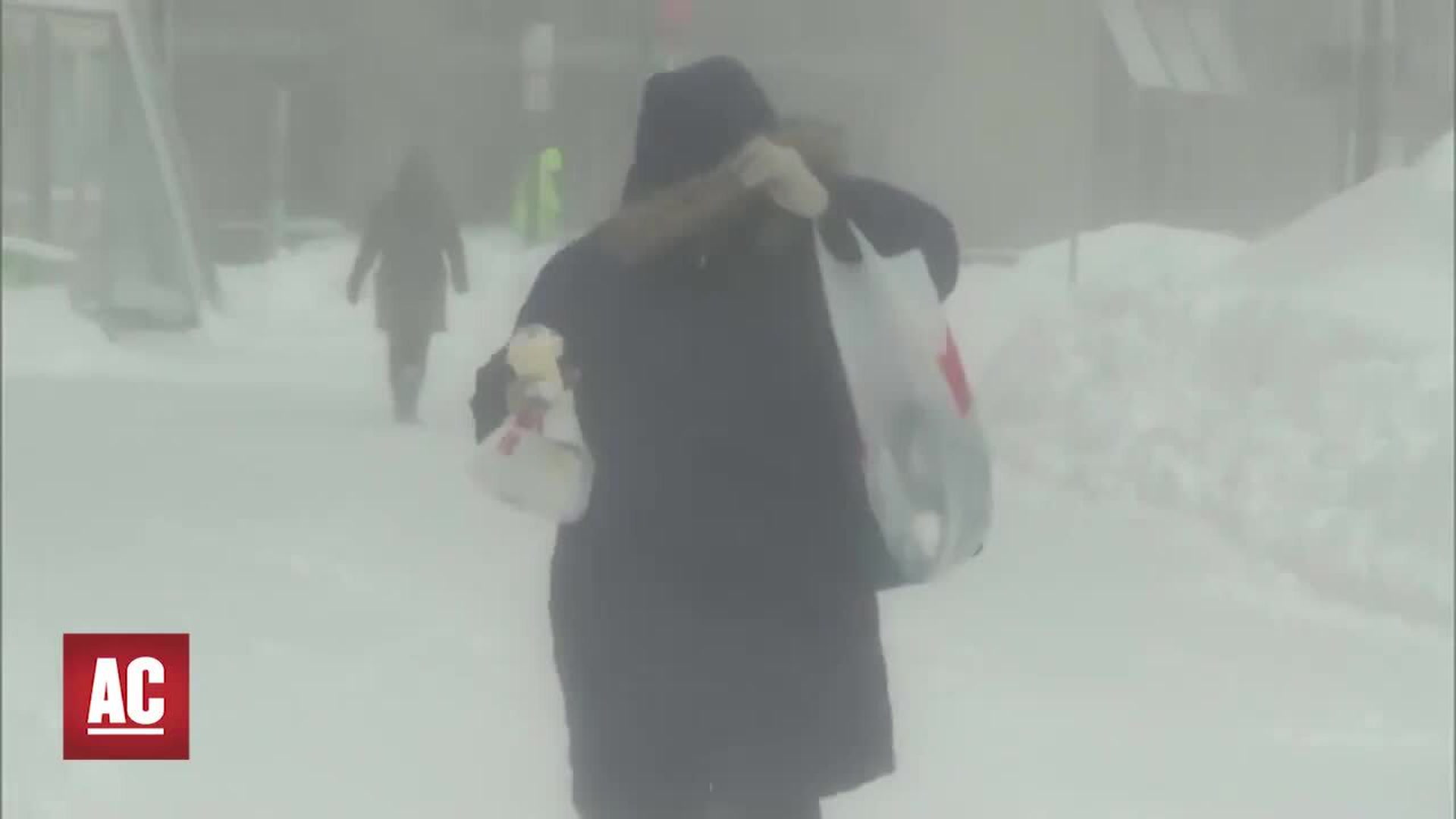
Video Source: Advocate Channel
